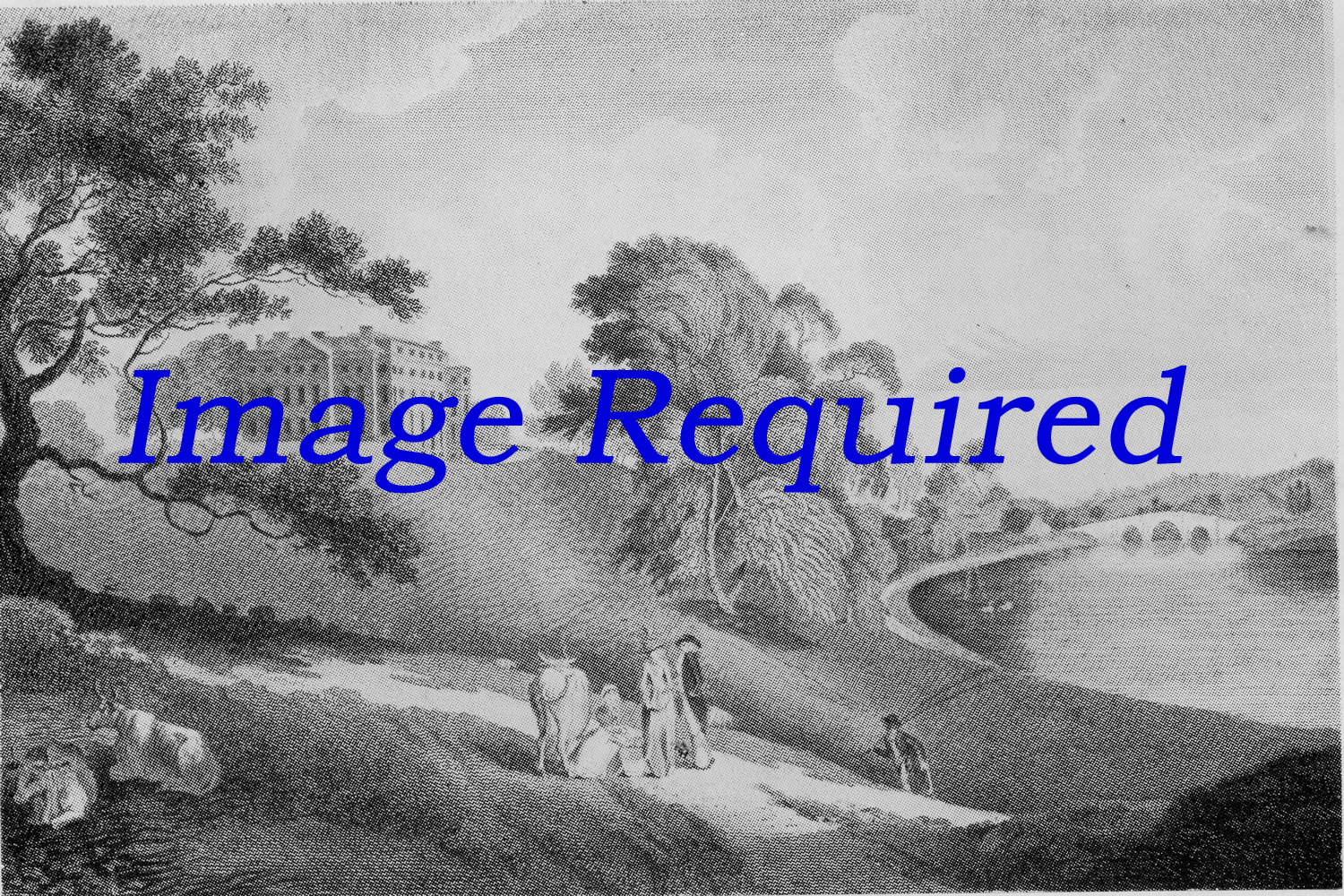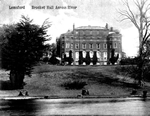Emily Mary Lamb (1787–1869)


Emily was born in 1787 to Peniston Lamb
Emily was born in 1787 to Peniston Lamb and his wife Elizabeth (née Milbanke). Due to her mother's numerous love affairs, her true paternity was never verified, and has been described as " shrouded in mystery". The Lamb family had been politically prominent since the mid-18th century, reaching their zenith of influence in Emily's generation. Her father was made Viscount Melbourne in 1781. Her eldest brother William Lamb twice held the premiership of England, while another brother, Frederick Lamb, was a noted diplomat, and a third, George Lamb, was a minor playwright and journalist of the era. The Lambs were closely linked with the Whig party, and were intimates of Queen Victoria.[1] There was a lifelong bond between William and Emily, whom he fondly called "that little devil Emily"; by contrast she detested his wife, Lady Caroline Lamb (whom she called "the little beast").
First marriage
At age eighteen, Emily married Peter Clavering-Cowper, 5th Earl Cowper, a man nine years her senior. Lord Cowper had a reputation for dullness and slowness of speech which were in marked contrast to his wife's social gifts; a more favourable portrait was that he was a quiet, pleasant man who was far less stupid than he appeared but avoided society and politics. Emily threw herself into the Regency social scene, becoming one of the leading ladies of the highly exclusive Almack's club. She was noted for kindness and generosity: she would do anything for a person she liked. She would even help people she disliked: although she detested her sister-in-law Caroline, when Caroline was barred from Almack's, a deep social disgrace, Emily eventually managed to get the ban lifted. Like many of the society ladies of the age, she had love affairs, including one with the Corsican diplomat Carlo Andrea Pozzo di Borgo, later Russian Ambassador to Great Britain.
Emily was noted not only for beauty but for her extraordinary charm: she was "grace put in action, whose softness was as seductive as her joyousness".
.Lord Cowper The affair with Palmerston
At Almack's, Lady Cowper was increasingly seen in the company of Henry John Temple, 3rd Viscount Palmerston, who was known as "Cupid" at the time for his various romantic dalliances, including affairs with Emily's fellow patronesses of Almack's, Dorothea Lieven and Sarah Villiers, Countess of Jersey. Palmerston was a regular fixture of her parties and salons, and as Lord Cowper sank into a long period of ill health and general decline, Lady Cowper and Lord Palmerston entered into a romantic relationship. This brought Palmerston, originally a Tory, increasingly in contact with notable Whigs, particularly Emily's brother. Of an 1826 proposal for Catholic Emancipation, Palmerston said, "the Whigs supported me most handsomely, and were indeed my chief and most active friends."[7] Soon after, Palmerston switched affiliations and ran as a Whig candidate. Emily's mother on her deathbed in 1818, urged her to remain constant to Palmerston, possibly looking forward to a future time when they would be free to marry.
Marriage to Palmerston
In 1837, Lord Cowper died, two days into the reign of Queen Victoria. This left the way open for a marriage between Emily and Palmerston, though their age was a cause for concern, as, in the eyes of her family, was Palmerston's reputation as a womaniser. The matter was referred to Queen Victoria, whose approval cleared the way for the marriage on 16 December 1839. Palmerston was 55 at the time, and Lady Cowper was 52.
They set up their home at Broadlands and the union was, by all accounts, a decidedly happy one. Of it, Lord Shaftesbury said, "His attentions to Lady Palmerston, when they both of them were well stricken in years, were those of a perpetual courtship. The sentiment was reciprocal; and I have frequently seen them go out on a morning to plant some trees, almost believing that they would live to eat the fruit, or sit together under the shade."
During the marriage, Lady Palmerston continued an active social role as a salon hostess. As the events were eagerly attended by foreign diplomats, Lord Palmerston would encourage his wife to float his ideas before the assembled guests and report back on their reception as a means of unofficially testing the diplomatic waters before committing himself publicly to an opinion.[9] She could not cure his notorious lack of punctuality, a fault she shared; Queen Victoria, while staying with them at Brocket, complained that Emily had kept her waiting for an hour for a carriage ride.
Death and children
In 1865, Lord Palmerston died, and Lady Palmerston followed him four years later. She was survived by her three sons and two daughters, all born during her marriage to Lord Cowper, although one of the daughters, Emily, was believed to have been fathered by Palmerston, and her son William may have been fathered by Pozzo di Borgo. They were:
George Cowper, 6th Earl CowperWilliam Cowper-Temple, 1st Baron Mount Temple
Charles Frances Jocelyn, Viscountess Jocelyn
Emily, who married Anthony Ashley-Cooper, 7th Earl of Shaftesbury.
Image from LLHG
Extra information from en.wikipedia.org
Contact Us Today info@lemsfordhistory.co.uk. Images and articles welcomed
New Brocket Hall
The estate was sold to Sir Matthew Lamb in 1746 by Thomas Wiinnington . This era was an eventful time Sir Matthew engaged one of the leading architects of the day Sir James Paine and asked him to build a new Brocket hall and Paine did just that. Sir Matthew died around 1765.
James Paine (1717–1789) was an English architect.Essentially a Palladian, early in his career he was Clerk of Works at Nostell Priory, and worked on many other projects in the area including Heath House in the village of Heath in between Nostell Priory and Wakefield.From the 1750s, he had his own practice, and designed many villas, usually consisting of a central building, often with a fine staircase, and two symmetrical wings.
Wikipedia
Early Days
LAround this area had several manors,Symonshyde, Benstead, Heron, and Chewells around the time of Henry III (1207 to 1272 ) these mannors merge and become ‘Watershyppes’Early evidence suggests the house dates back to 1239 and was owned by Simon Fitz Ade. They were also known as FitzSymon.


The Families of Brocket Hall
Early evidence suggests the house dates back to 1239 and was owned by Simon Fitz Ade. They were also known as FitzSymon.
Thomas Lord Fauconberg born 1341 and married to Joan Nevile born 1363 – daughter Joan De Fauconberg Born 1367 :
The most famous of the Brocket family was Sir John Brocket, who married Helen, daughter of Sir Rowland Lytton of Knebworth in 1558 . Sir John Brocket and was high sheriff of Hertfordshire in 1553. Sir John was a close ally of Elizabeth 1st,. Elizabeth was under house arrest at nearby Hatfield house.
The estate was sold to Sir Matthew Lamb in 1746 by Thomas Wiinnington . This era was an eventful time Sir Matthew engaged one of the leading architects of the day Sir James Paine and asked him to build a new Brocket hall and Paine did just that. Sir Matthew died around 1765.
Stephens retired to England. He was created a Baronet, of Montreal in the Province of Quebec in the Dominion of Canada, in 1886, and raised to the peerage as Baron Mount Stephen, of Mount Stephen in the Province of British Columbia and Dominion of Canada
On the death of Lord Mount Stephen in 1921 the house was put up for sale and bought in 1923 by Sir Charles Nall –Cain of the Node Codicote. Sir Charles took the title ‘Lord Brocket ‘ in 1933 and on his death in the following year the estate passed onto his only son Arthur Ronald Nall- Cain (1904 – 1966) Lord Brocket.